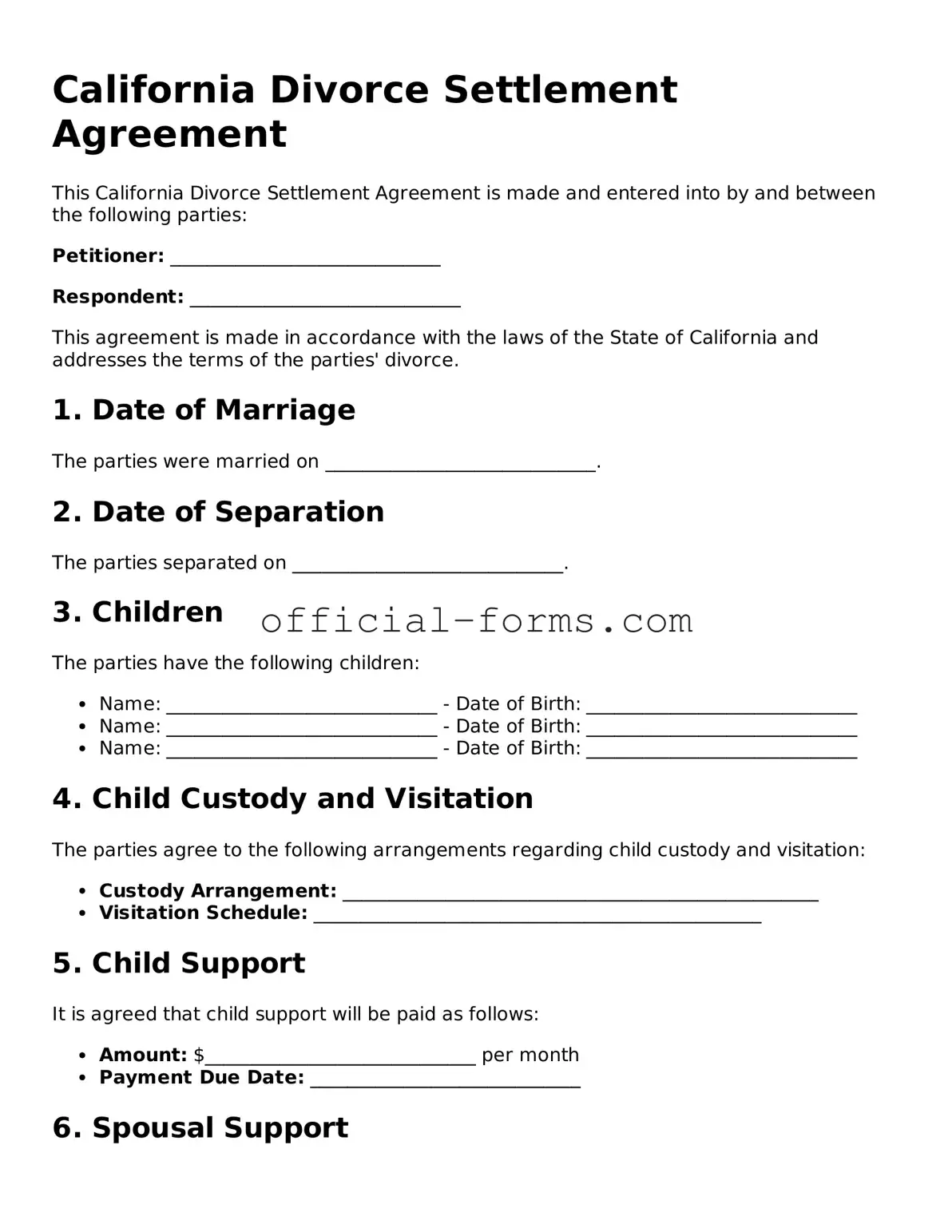Filling out the California Divorce Settlement Agreement form can be a daunting task, and many individuals make common mistakes that can lead to complications down the line. One frequent error is failing to provide complete and accurate information. Omitting details about assets, debts, or income can result in misunderstandings or disputes later. It is essential to ensure that every section is filled out thoroughly to avoid potential issues.
Another mistake people often make is not understanding the implications of the agreements they are signing. For example, individuals may agree to certain terms without fully grasping how those terms will affect their financial situation or custody arrangements. Taking the time to read and comprehend each clause is crucial before signing the document.
Many individuals also neglect to consider tax implications when dividing assets. Assets like retirement accounts and real estate can have tax consequences that should be factored into the settlement. Failing to do so may lead to unexpected financial burdens in the future.
Additionally, some people overlook the importance of including a plan for future changes. Life circumstances can shift, and it’s wise to have a provision in place that addresses how modifications to the agreement will be handled. This foresight can prevent future conflicts and ensure that both parties feel secure in their arrangements.
Another common mistake is not consulting with a legal professional. While it may seem tempting to complete the form independently to save money, doing so can lead to errors that may cost more in the long run. A lawyer can provide guidance, ensuring that the agreement complies with California law and adequately protects your interests.
Some individuals also fail to communicate effectively with their spouse during the process. Open and honest communication can lead to a smoother negotiation process and a more amicable settlement. When both parties are involved in discussions, misunderstandings can be minimized, and a mutually beneficial agreement can be reached.
Furthermore, a lack of organization can hinder the completion of the form. Gathering necessary documents and information beforehand can streamline the process. Individuals should compile financial statements, asset valuations, and other relevant paperwork to ensure that they have everything needed to complete the form accurately.
People sometimes underestimate the importance of being realistic about their expectations. It is vital to approach the settlement with a balanced perspective. Expecting to receive everything you want can lead to frustration and conflict. Understanding that compromise is often necessary can facilitate a more productive negotiation.
Lastly, individuals may forget to keep copies of the completed agreement. After finalizing the form, it is important to retain a copy for personal records. This documentation can be invaluable in case disputes arise or if modifications need to be made in the future.
